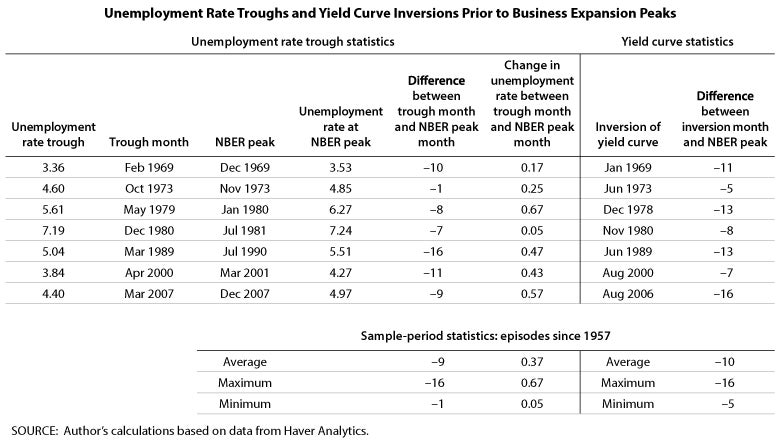The U.S. unemployment rate ticked slightly higher to 4 percent in January, just off its lowest levels of the past 50 years. While a low unemployment rate is good news for American workers, it has historically been bad news for investors.
Two Historical Signals
Troughs in unemployment and inversions in Treasury yields have historically been two of the best predictors of economic recessions, according to the St. Louis Federal Reserve Bank.
The spread on 10-year and two-year Treasury bonds contracted to as low as 0.11 percent in early December. Since then, the gap has widened to 0.2 percent, but it remains at its lowest level since 2007.
But while the yield curve has so far avoided an inversion, the unemployment rate may have already bottomed in the U.S. Unemployment hit a 49-year low of 3.7 percent back in September and November and hovered between 3.7 percent and 3.8 percent for four consecutive months from August to November.
Since then, it ticked higher to 3.9 percent in December and then hit 4 percent in January, its highest reading since it was at 4.1 percent in February 2018.
At this point, investors certainly don’t seem concerned. After a volatile end to 2018, the SPDR S&P 500 ETF Trust SPY has bounced back by 9.1 percent so far in the new year.
The Numbers
The data below shows the historic lag time between yield curve inversions and unemployment rate troughs and the end of economic expansion periods as defined by the National Bureau for Economic Research.
Yield curves invert on average about 10 months prior to an economic cycle peak, whereas unemployment troughs on average about nine months prior to the beginning of a recession, according to the data.

“Based on this evidence, it appears that both indicators tend to be reliable predictors of a business recession,” St. Louis Fed economist Kevin Kliesen recently said.
He also added that there have been many instances of “false positive” recession signals when it comes to unemployment rate. For example, the unemployment rate jumped from 5.36 percent to 5.95 percent from October 1962 to February 1963 before once again turning lower.
Regions To Watch
Traders looking for the earliest signs that the recent trough in U.S. unemployment rates is a true recession indicator rather than a false signal can focus their attention on early economic warning signs from certain regions across the country.
The latest data from the Bureau of Labor Statistics indicates the cities of Minneapolis, Boston and San Jose have the lowest unemployment rates in the country at 2.4 percent or lower. Signs of economic slowdowns in these regions may be a red flag that a nationwide slowdown is soon to follow.
Word Of Caution
Of course, Kliesen said economists and traders should never put all their faith in a single statistic.
“As with all recession signals, the wise economic analysts should examine many indicators rather than betting the farm on one or two,” he wrote.
Related Links:
Mardi Gras To The Super Bowl: The Local Economic Impact Of America's Biggest Parties
© 2025 Benzinga.com. Benzinga does not provide investment advice. All rights reserved.
Trade confidently with insights and alerts from analyst ratings, free reports and breaking news that affects the stocks you care about.